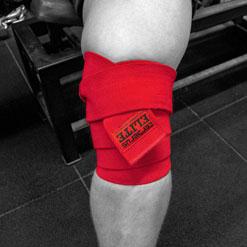
Overtraining is a prevalent challenge in the realm of strength sports, where the fine line between pushing the limits and surpassing them can often blur. This condition not only hampers progress but can also lead to serious physical and psychological health issues. Understanding how to recognize the signs of overtraining and implementing effective strategies for prevention and recovery is crucial for athletes aiming to sustain long-term success in their disciplines. This article explores the critical aspects of overtraining to guide strength athletes in navigating this challenge.
Understanding Overtraining In Strength Sports:
Overtraining syndrome (OTS) occurs when there's an imbalance between training and recovery, leading to a decline in performance and recovery capabilities. It's characterized by prolonged fatigue, decreased performance, and increased risk of injury. In strength sports, where intensity and volume are often high, recognizing the early signs of OTS is essential for maintaining optimal health and performance.
Recognizing The Signs Of Overtraining:
- Physical Symptoms: Persistent muscle soreness, increased incidence of injuries, insomnia, and unexplained decreases in performance are hallmark signs.
- Psychological Symptoms: Mood swings, irritability, depression, and a lack of motivation can indicate overtraining.
- Biological Markers: Changes in resting heart rate, prolonged recovery heart rate, and alterations in appetite or weight could signal OTS.
Strategies For Preventions:
1. Structured Training Programs: Design training programs with a balanced approach to intensity, volume, and recovery. Incorporating periodization can help manage workload and prevent overtraining.
2. Adequate Nutrition: Ensure your diet supports your training demands, with sufficient calories, proteins for muscle repair, carbohydrates for energy, and fats for hormonal balance.
3. Quality Sleep: Prioritize sleep as a cornerstone of recovery. Aim for 7-9 hours of quality sleep per night to support physical repair and psychological well-being.
4. Active Recovery and Rest Days: Incorporate active recovery techniques, such as light cardio, yoga, or mobility work, and schedule regular rest days to allow the body to recuperate.
Implementing Solutions For Recovery:
- Immediate Rest: At the first signs of overtraining, reducing training load or taking complete rest can be crucial for recovery.
- Professional Guidance: Consulting with a coach, sports scientist, or healthcare provider can provide personalized advice and adjustments to training and recovery strategies.
- Mental Health Support: Addressing the psychological aspects of overtraining is as important as the physical recovery. Techniques like mindfulness, meditation, or professional counseling can be beneficial.
Monitoring and Adjusting Training Load:
- Use Of Technology: Wearables and fitness apps can help monitor training load, sleep quality, and heart rate variability (HRV), offering valuable insights into recovery needs.
- Feedback Loops: Regularly assess your training outcomes, physical condition, and mental state. Be prepared to adjust your training plan based on these feedback mechanisms.
Overtraining is a significant barrier to progress and health in strength sports, but with the right knowledge and strategies, it can be prevented and managed. Recognizing the signs early and implementing effective prevention and recovery strategies are key to sustaining long-term performance and well-being. Remember, the goal of training is to stimulate adaptation and improvement, not to push the body into a state of exhaustion.
Navigating the challenges of overtraining requires a balanced approach to training, recovery, and self-awareness. By listening to your body, prioritizing recovery, and adjusting your training plan as needed, you can avoid the pitfalls of overtraining and continue to make gains safely and effectively.















































